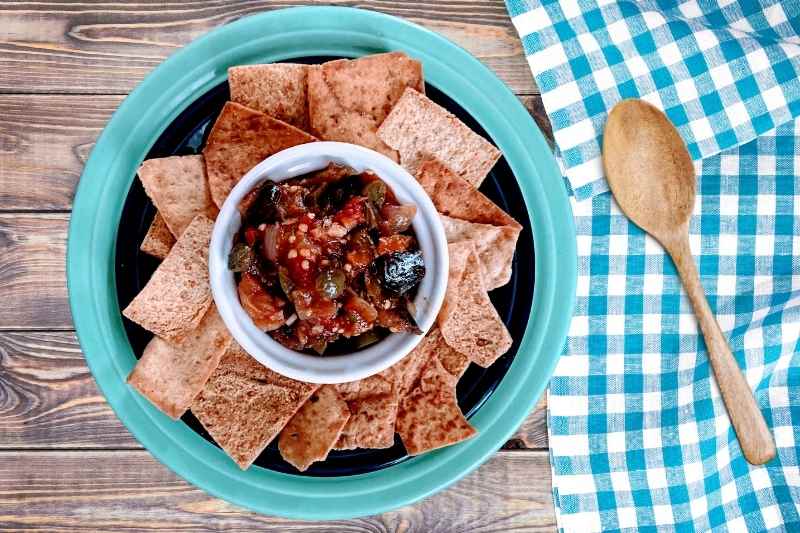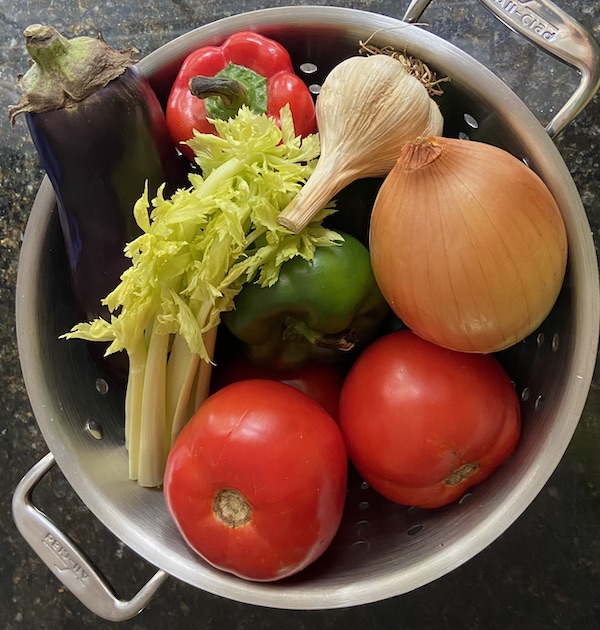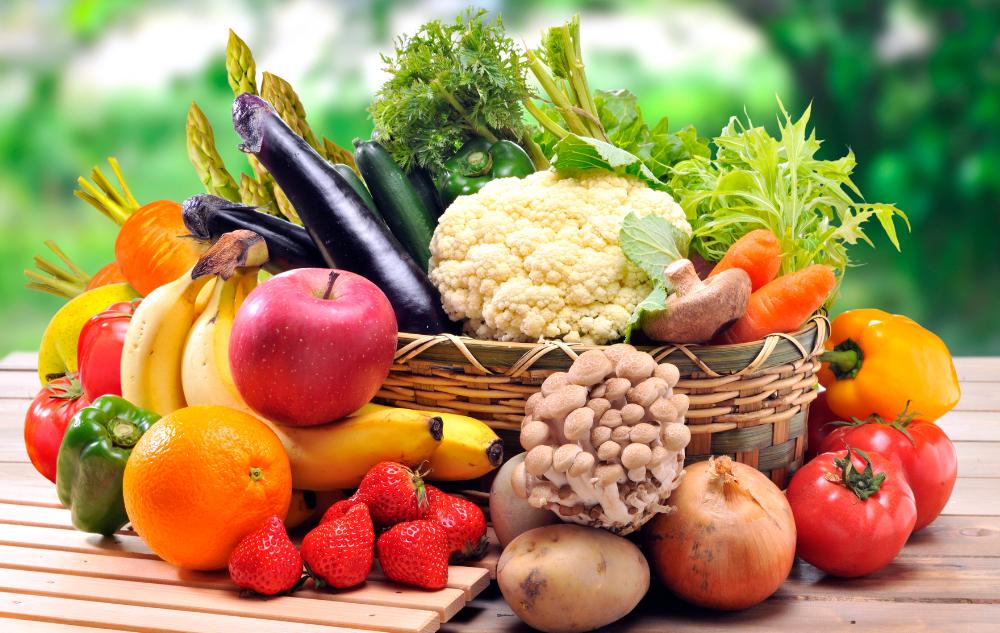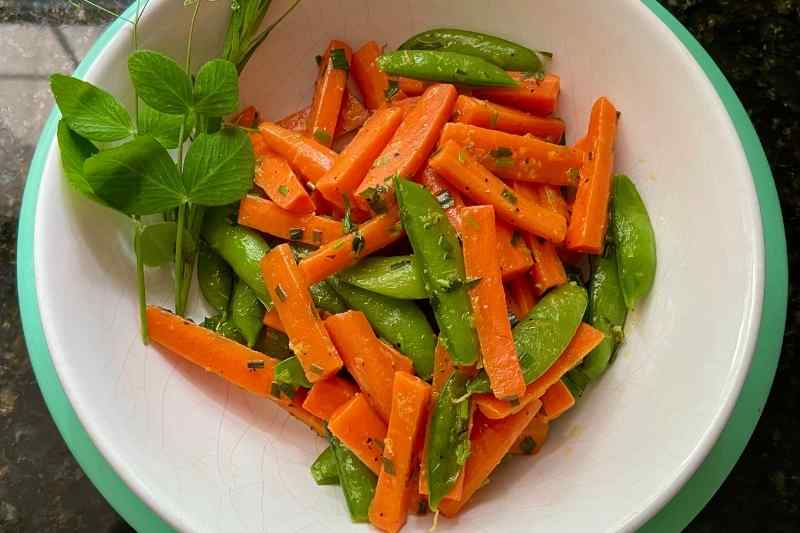This sicilian caponata appetizer is so delicious, especially when created from fresh garden vegetables at the end of the growing season. I like to make extra and freeze it in batches to enjoy as an appetizer throughout the winter when I am really craving the taste of the freshness of summer. This caponata appetizer is versatile: it can be served hot as a vegetable side dish, or room temperature as a relish on an antipasto or charcuterie tray.
Recipe adapted from Italian Cooking Class Cookbook by Beekman House
Makes about 5 cups (about 8-10 servings).
Ingredients:
- 1 1/2 pounds (675g) eggplant (about 1 large or 2 small)
- 1 tablespoon (15ml) salt
- 2 large red bell peppers
- 1 large onion
- 1 large stalk celery
- 1/4 cup (60ml) extra virgin olive oil
- 1/8 to 1/4 teaspoon (0.5 to 1ml) dried hot red pepper flakes
- 1 can (14 1/2 ounces or 415g) whole peeled tomatoes or fresh tomatoes with skins removed* (see recipe below for an easy way to remove tomato peels)
- 1-2 large garlic cloves
- 2 tablespoons (30ml) red wine vinegar
- 1 tablespoon (15ml) sugar
- 8 Italian or Greek style black olives
- 1 tablespoon (15ml) drained capers
Instructions:
- Rinse eggplant; cut into 3/4 inch (2cm) cubes. Place in a large colander; sprinkle with salt and toss. Let stand and drain in the sink or bowl, tossing occasionally, 1 hour
- Rinse eggplant and drain well; squeeze in a clean kitchen towel to extract moisture. Reserve.
- Core and seed bell peppers; cut into 3/4 inch (2cm) chunks. Chop onion coarsely. Cut celery diagonally into 1/4 inch (0.5 cm) thick slices.
- Heat oil in a 10-inch (25 cm) non-corrosive skillet over medium-high heat. Add bell peppers, onion, celery, and pepper flakes; sauté 5 minutes. Add reserved eggplant, cook over medium heat, stirring occasionally, 5 minutes longer. Remove from heat.
- Press tomatoes and their liquid through a sieve into vegetables in a skillet;
- discard seeds. Mince garlic; add garlic to skillet. Stir in vinegar and sugar. Cook and stir over medium-high heat for 3 minutes. Remove from heat.
- Pit and chop olives. Add olives and capers to the skillet. Cook over medium-low heat, stirring occasionally; until most of the liquid has evaporated and sauce is thickened, about 10 minutes.
*How to Peel Fresh Tomatoes:
I like to focus my plant-based eating habits on what is in season and what is grown locally. When I have time at the end of the growing season, I can or freeze my summer bounty to enjoy all year long.
In the recipe provided above, I chose to use freshly peeled tomatoes. Peeling the tomatoes is not necessary, but doing so makes the sauce creamier. It takes about 10 minutes to peel fresh tomatoes. All you need is a cutting board, a large bowl of ice water, and a 3-6 qt pot for processing the tomatoes.
Instructions:
- Set a large pot of water on the stove to boil while you prepare the tomatoes.
- Turn tomatoes over to the bottom and, using a paring knife, cut a shallow X in the bottom of each tomato. Core tomatoes, if you like.
- Carefully lower tomatoes into the boiling water, in batches. Remove after about 30 seconds, once skins start to crack. Be careful to not boil too long, otherwise the tomatoes will start to cook and get too soft to handle easily.
- Immediately put tomatoes into the bowl of ice water. Heating and then shocking the tomatoes in this way makes the skins peel right off!
- Once tomatoes are cool enough to handle, peel skins from tomatoes and use in your favorite recipe.
Note: Leftover peeled tomatoes can be easily dried in the oven for future use in your favorite recipes.
Recipe compliments of OPL Naturalist and Home Chef Yvonne Dwyer













